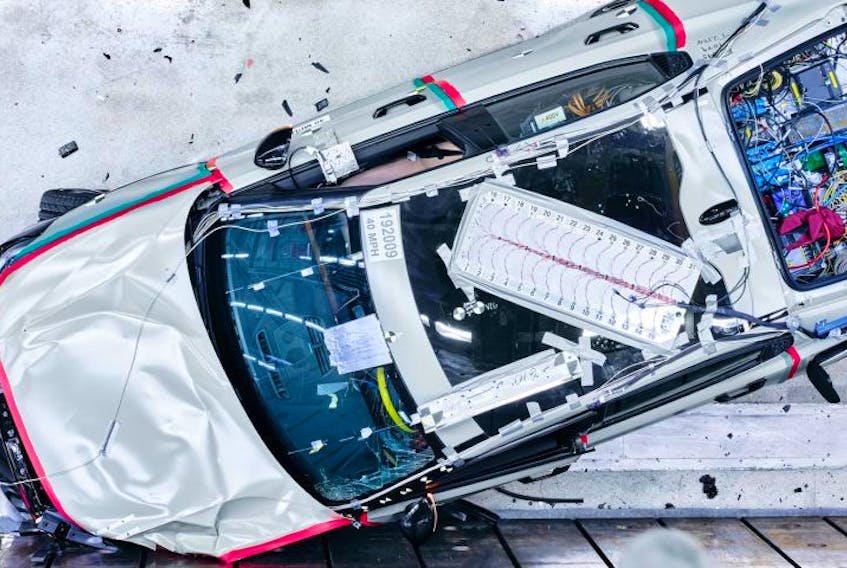Lost in the hype that is everything Tesla is that Elon’s finest has a tendency to burst into flames when involved in a serious accident. And not only are such conflagrations hot as Hades, they’re incredibly hard to put out.
As Motor Mouth previously detailed, some jurisdictions require flaming Teslas to be totally submerged – as in the whole car — in water for up to a week to ensure the fire doesn’t return.
That adds a little meat to the latest announcement from Volvo, the car company for whom passenger and pedestrian safety is nothing short of a religion. According to recent missive from the Swedish automaker, its Polestar 2, the first completely battery-powered vehicle from its new luxury performance division, has some new technology aimed precisely at keeping its lithium from going up in flames in the first place.
Protecting the battery pack in the event of a collision is crucial, says Polestar, and so the 2 first encloses all its cells in an aluminum case fully housed within the floor structure of the unibody frame. In the event of a crash, the battery pack is automatically disconnected from the rest of the vehicle, ensuring no live connection and hopefully no instigation for fire.
Severe partial offset crash
All fairly normal so far, but the Polestar 2 also includes something Volvo call its ‘SPOC Block’ (Severe Partial Offset Crash), a deflective solid aluminum block housed on the bottom edge of the front firewall on either side of the car. It is designed to minimize intrusion of the wheel and other objects into the cabin or towards the battery pack during partially offset frontal collisions (one of the collisions types most likely to cause damage to the subfloor, and therefore the battery).
Indeed, as Volvo says, a typical internal combustion engine actually absorbs a significant amount of energy in the front crash, so designing what it calls a new Front Lower Load Path (FLLP) is essential to protect car and occupants for severely localized impacts — colliding head-on with a pole, for instance.
As in most things, though, prevention is always better than looking for a cure, and no one in the auto industry is more dedicated to preventing accidents and mitigating their effects than Volvo, so there’s more to the Polestar 2’s safety net than just bulwarks against intrusion. Like all new BEVs, the 2 has what Polestar calls its Acoustic Vehicle Alert System, which is just a fancy way of saying the car makes the “vroom” noises absent from its non-ICE powertrain.
Air bags
Also, just when it seemed like there where no more cabin occupant areas to be air-bagged, Volvo found more places to install automatically inflating air cushions, these ones fitted to the inner edge of the front seat backs. One assumes Volvo determined front seat occupants were in danger of knocking heads during side collisions.
Lastly, the Polestar 2 has a heated radar sensor in its front grille that powers its collision avoidance systems. Frequent readers will be aware such radar systems – either for pre-collision warning systems or active cruise control systems – often go wonky in winter. Kudos to Volvo if it’s solved the problem.
Meanwhile, Volvo revealed pricing for the Polestar 2 will start at US$59,900, some $3,000 than first anticipated. In Canada, we’re looking at around $69,000. That’s for the initial version with 408 horsepower, 487 foot-pounds of torque, all-wheel-drive and a 78-kilowatt-hour battery.
Copyright PostMedia Network, 2020









